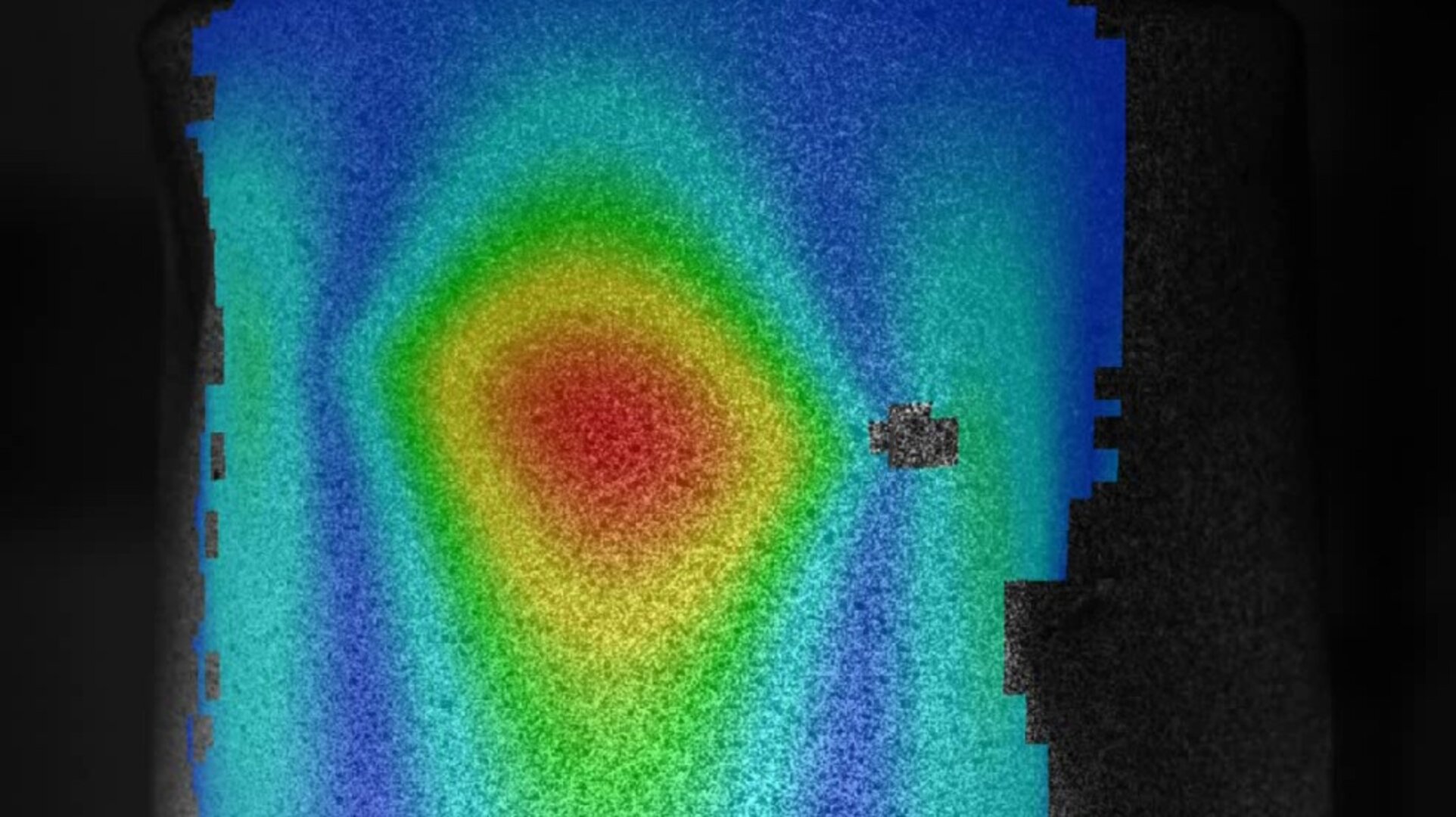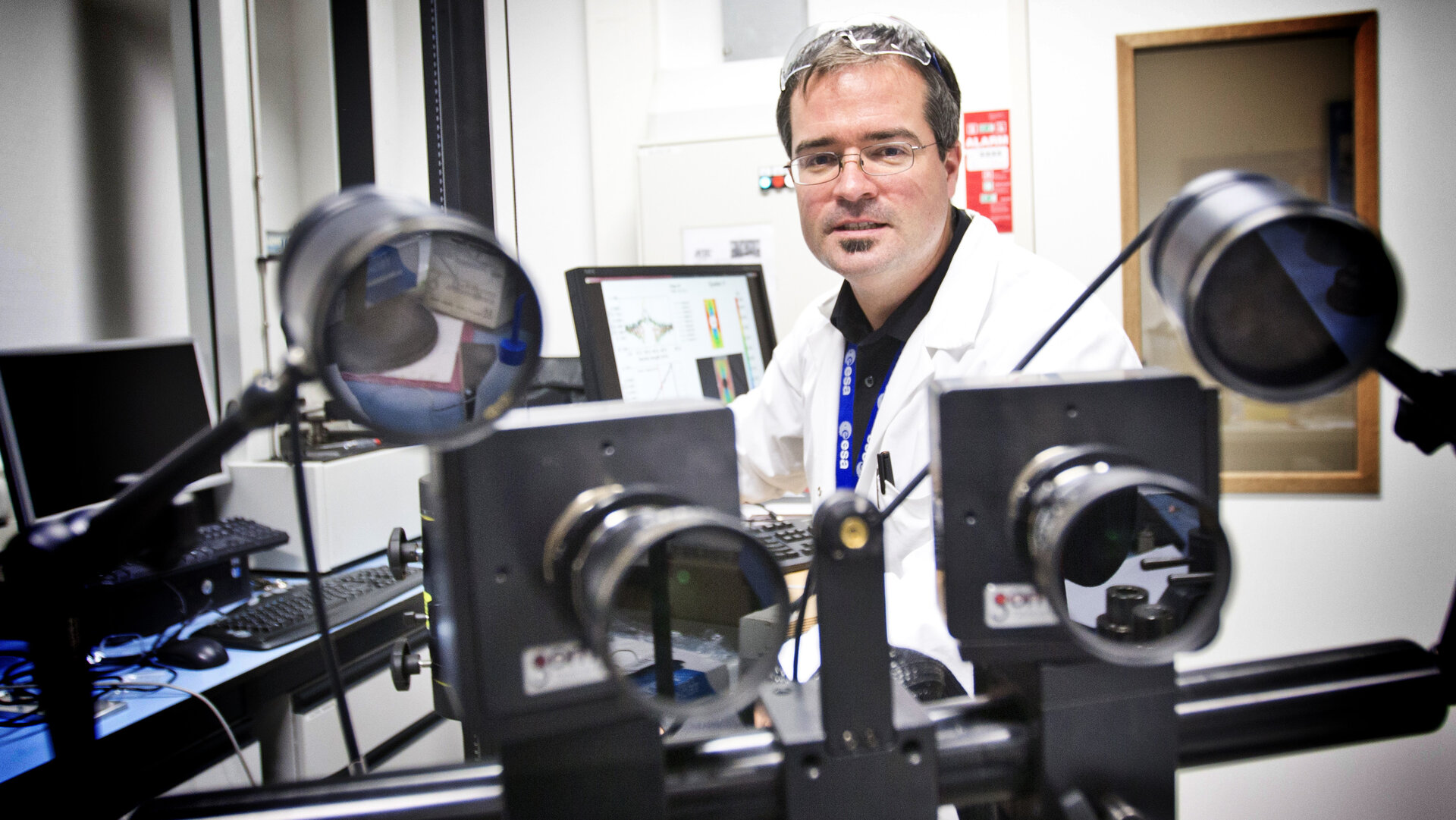Eyeing strain
Satellite structures must stay rigid, resisting the extreme accelerations, vibrations and temperature shifts of spaceflight. This is where this 3D camera system comes in, used to identify the slightest submillimetre deformation of materials and components put to the test.
Fracture engineer Andreas Tesch of ESA’s Materials and Electrical Components Laboratories, based at the ESTEC technical centre in Noordwijk, the Netherlands, is seen preparing ESA’s Aramis measuring system.
Without touching the test subject, the cameras measure the 3D surface deformation of items subjected to various kinds of loads.
Designed for flexibility, its orientation guided by a laser pointer, Aramis can analyse components ranging from millimetres in size up to items several metres larger.
It can then identify the slightest 3D displacement, from which it can derive surface strain values and material strain rates.


Access the video
It would take thousands of strain gauges fitted onto an experiment to achieve comparable results.
A precise mathematical calibration model of the initial setup is calculated, then checked against subsequent test images, in a high-tech version of ‘spot the difference’.
Strains are calculated based on a component’s geometry and tendency to deform, or ‘plasticity’. The system can also perform direct comparisons between experimental results and a component’s computer model, endowed with material properties through ‘finite element analysis’.
Supplied by Germany’s Gesellschaft für Optische Messtechnik, GOM, company, a spin-off from the Technical University of Braunschweig, Aramis is widely employed in terrestrial industry, analysing deformation in everything from car doors to running shoes.





